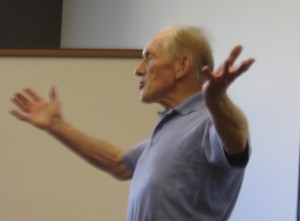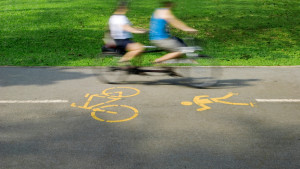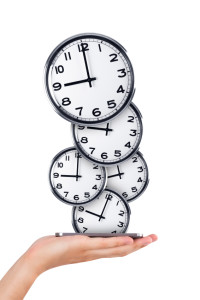Thirty-five individuals from across the nation and around the world gathered in Golden, Colorado over Memorial Day weekend to celebrate the life and work of movement analysis pioneer, Warren Lamb (1923-2014) at a seminar sponsored by Motus Humanus.
 Warren Lamb began his career under the tutelage of movement theorist Rudolf Laban and management consultant F.C. Lawrence. Their ground-breaking work provided a basis for matching the movement traits of manual laborers to the motion factors of various factory jobs. Lamb took this work much further, to relate movement patterns to cognitive processes used in decision making at the managerial level. Over 400 companies worldwide utilized Lamb’s profiles work to select and build executive teams, with some firms employing this consulting approach continuously for three decades.
Warren Lamb began his career under the tutelage of movement theorist Rudolf Laban and management consultant F.C. Lawrence. Their ground-breaking work provided a basis for matching the movement traits of manual laborers to the motion factors of various factory jobs. Lamb took this work much further, to relate movement patterns to cognitive processes used in decision making at the managerial level. Over 400 companies worldwide utilized Lamb’s profiles work to select and build executive teams, with some firms employing this consulting approach continuously for three decades.
The weekend seminar sponsored by Motus Humanus incorporated sessions on Lamb’s key ideas. All the presenters were Registered Movement Pattern Analysts who had studied and worked with Lamb. Presenters included Laurie Cameron, Jagriti Chander, Alison Henderson, Charlotte Honda, Patricia Marek, James McBride, Beverly Stokes, and myself.
In addition, Motus Humanus recognized the contributions of Eden Davies with its new “Friend of Movement Study” award. Over the last 20 years, Davies has promoted Movement Pattern Analysis through writing, publishing, and other supportive efforts. The award was presented by Lamb’s daughter, Imogen Lamb, who traveled from Europe to attend the event, along with her sister Elizabeth and brother Tim Lamb. A particular highlight was the impromptu talk Tim gave at the closing banquet in which he shared his perspective on growing up with a very unconventional father who even had an empty room in the family home dedicated to movement!


 As students are grappling with the general concepts and descriptive terms of Laban Movement Analysis, they often ask hypothetical questions. For example, “If I were on board a ship crossing the international dateline while balancing an ice cream cone on my nose, would that be lightness?”
As students are grappling with the general concepts and descriptive terms of Laban Movement Analysis, they often ask hypothetical questions. For example, “If I were on board a ship crossing the international dateline while balancing an ice cream cone on my nose, would that be lightness?”


 Movement has “no fixed points.” Movement is dynamic, changeable, and ephemeral. Even a movement sequence that has been “set” will vary a little with each performance. These variations frustrate students, particularly at the beginning. Or as one student complained, “Of course I could observe her movement if only she would hold still!”
Movement has “no fixed points.” Movement is dynamic, changeable, and ephemeral. Even a movement sequence that has been “set” will vary a little with each performance. These variations frustrate students, particularly at the beginning. Or as one student complained, “Of course I could observe her movement if only she would hold still!”